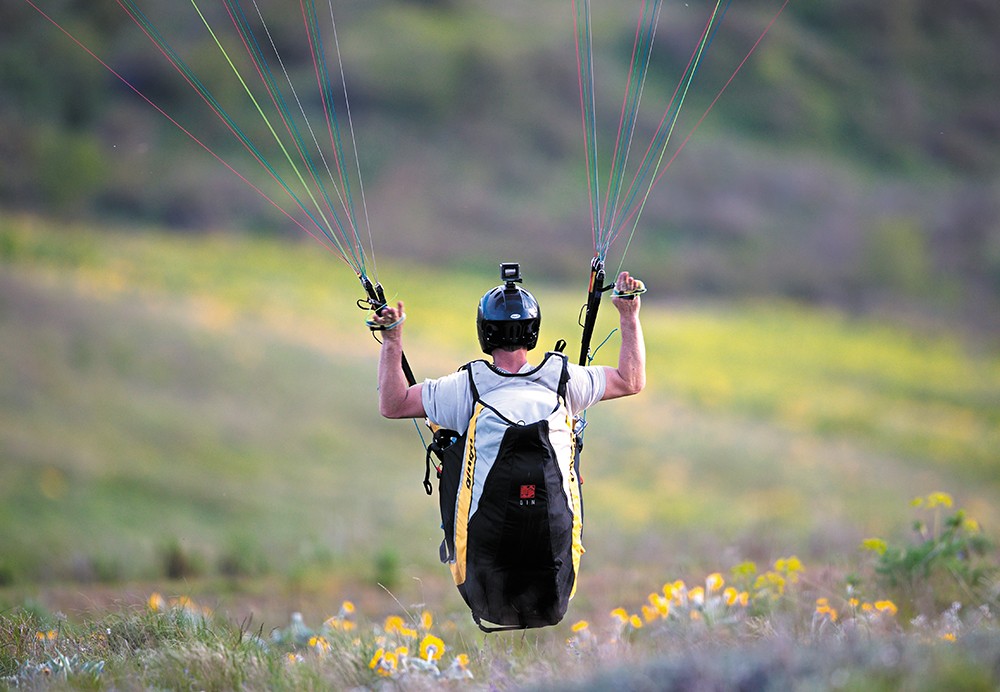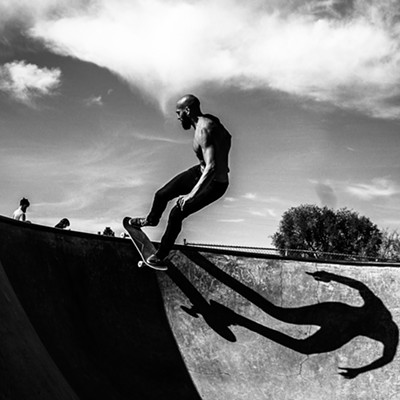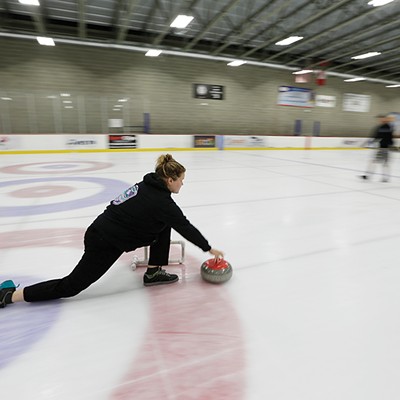Some like to take in the Inland Northwest's views from a comfortable park bench. Others like to take them in while plummeting from 13,000 feet above the ground.
"If you don't like having fun, then don't go skydiving," says Kara Menke, an instructor with SKYDIVE WEST PLAINS near Ritzville (skydivewestplains.com).
Menke estimates that she's jumped out of a plane more than 1,700 times in her life, and believes that almost everyone should try it at least once.
"It's just gorgeous, you can see forever," she says. "If people are interested, we will do everything we can to get them that experience. There isn't a valid excuse not to try it once. It's just so dang fun."
The family-run company, in existence since the 1980s, offers a range of options for first-timers and experienced jumpers.
If you're jumping out of a plane for the first time ever, Menke recommends a tandem jump, where you're strapped to an certified instructor. But they also offer "solo first jumps," which require a four-to-six-hour course beforehand.
On a normal skydive, you'll drop from about 13,000 feet above the ground. Freefall lasts from 45 to 60 seconds with about a seven-minute canopy ride down to a grassy field.
Then there's the "high altitude" jump, which drops from 20,000 feet.
"You can actually see the curve of the Earth," Menke says. "They're pretty awesome, especially if you've already tried the tandem jump."
Divers must wear oxygen masks on the way up, and weather conditions have to be somewhat specific — no clouds, little wind.
Cost starts at about $200 and increases depending on what day of the week you go.
HANG-GLIDING AND PARAGLIDING
Whatever you do, don't call it parasailing. The paragliders don't like that. It's like the second cousin; parasailing is a lazy man's game. Paragliding, however, requires skill and training.
"It's not something you can just go to," says Steve Baran, president of the gliding club CENTER OF LIFT. "You've gotta learn the basics first."
Baran encourages anyone interested in learning more about the spot to contact the club (208-907-1265 or [email protected]). Go out with them a few times, and see how it works.
Or, Baran suggests two instructors in the area: FIVE VALLEY HANG GLIDING in Missoula, Montana (fivevalleyhanggliding.com) and AERIAL PARAGLIDING SCHOOL & FLIGHT PARK in Cashmere, Washington.
There are some differences between hang gliding and paragliding — primarily, the equipment. Paragliding uses a nylon parachute, and the pilot is typically in a seated position; with hang gliding, the pilot is in a prone position below a Mylar fabric hung on a frame.
Hang gliders can travel faster, but paragliders are easier to lug around — to the summit of a mountain, for example.
Baran also notes that there are generally no height and weight restrictions. Last weekend, the 65-year-old went flying with a 70-year-old woman who was less than 5 feet tall.
"It's not so much physical prowess as it is knowing your capabilities," he says. "Though you have to be able run to attain flying speed."
















